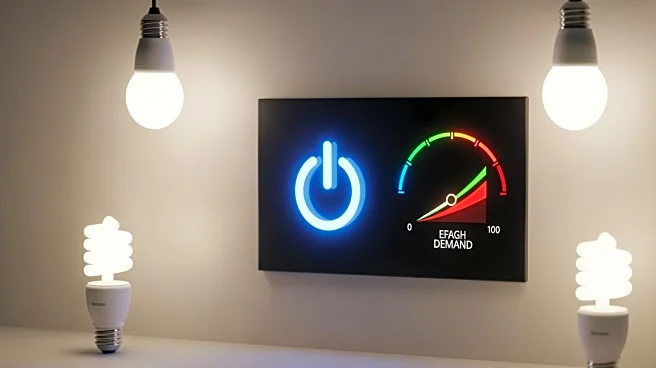What's Happening?
The U.S. power system is experiencing unprecedented load growth driven by data centers, new manufacturing facilities, and the rapid adoption of electric vehicles and heat pumps. This surge in electricity
demand is reshaping the grid, presenting both opportunities and risks. Utilities are encouraged to invest proactively and implement correct cost allocation strategies to potentially deliver cleaner air, economic development, and lower average electricity costs. However, if planning and cost allocation lag, ratepayers may face higher bills and inequities in benefits distribution. States like Minnesota and Massachusetts are developing proactive grid planning and cost allocation frameworks to address these challenges.
Why It's Important?
The electrification era presents a chance to lower costs and improve air quality, but only if utilities plan ahead and allocate costs effectively. Widespread residential electrification, when paired with thoughtful planning, can reduce average rates by spreading fixed infrastructure costs across more kilowatt-hours. This dynamic, known as 'beneficial electrification,' can lower rates for everyone. However, the timing of cost recovery and design of cost allocation will determine whether electrification exacerbates existing energy affordability issues or leads to a more affordable energy future. Proper cost allocation frameworks are crucial to ensure all families benefit from residential electrification.
What's Next?
Several states are already implementing proactive measures. Minnesota's Public Utilities Commission has adopted a modular approach emphasizing 'cost-causer pays' fees, while Massachusetts is advancing a long-term system planning program with a proposed proactive hosting-capacity fee. These initiatives aim to distribute upgrade costs more equitably and protect ratepayers. As utilities race to meet rising demand, the stakes of getting cost allocation right are higher than ever. Early engagement and structured conversations can promote fairness and affordability in grid modernization, ensuring the benefits of electrification reach everyone.
Beyond the Headlines
The complexity of cost allocation is often overlooked, with many studies focusing narrowly on distribution upgrades and omitting impacts of generation and transmission costs. This omission obscures the true picture of ratepayer impacts and risks. Modernizing regulatory practices by front-loading cost allocation discussions during resource planning could yield significant benefits, reducing uncertainty and streamlining approvals. This approach ensures customers aren't surprised by rate impacts after investments are made, promoting transparency and fairness in the electrification process.











